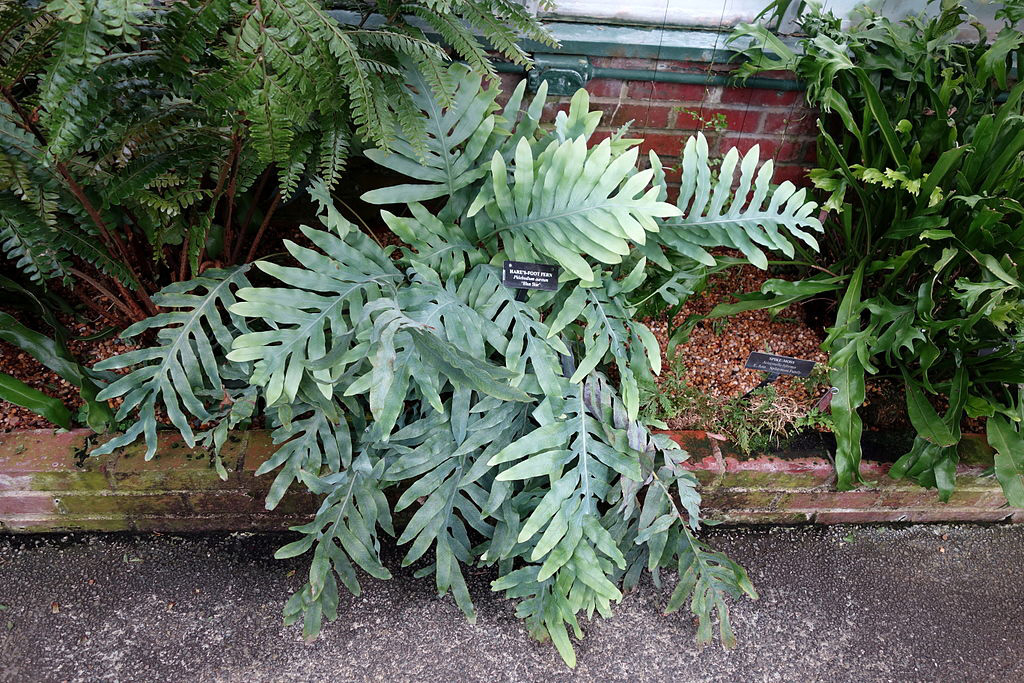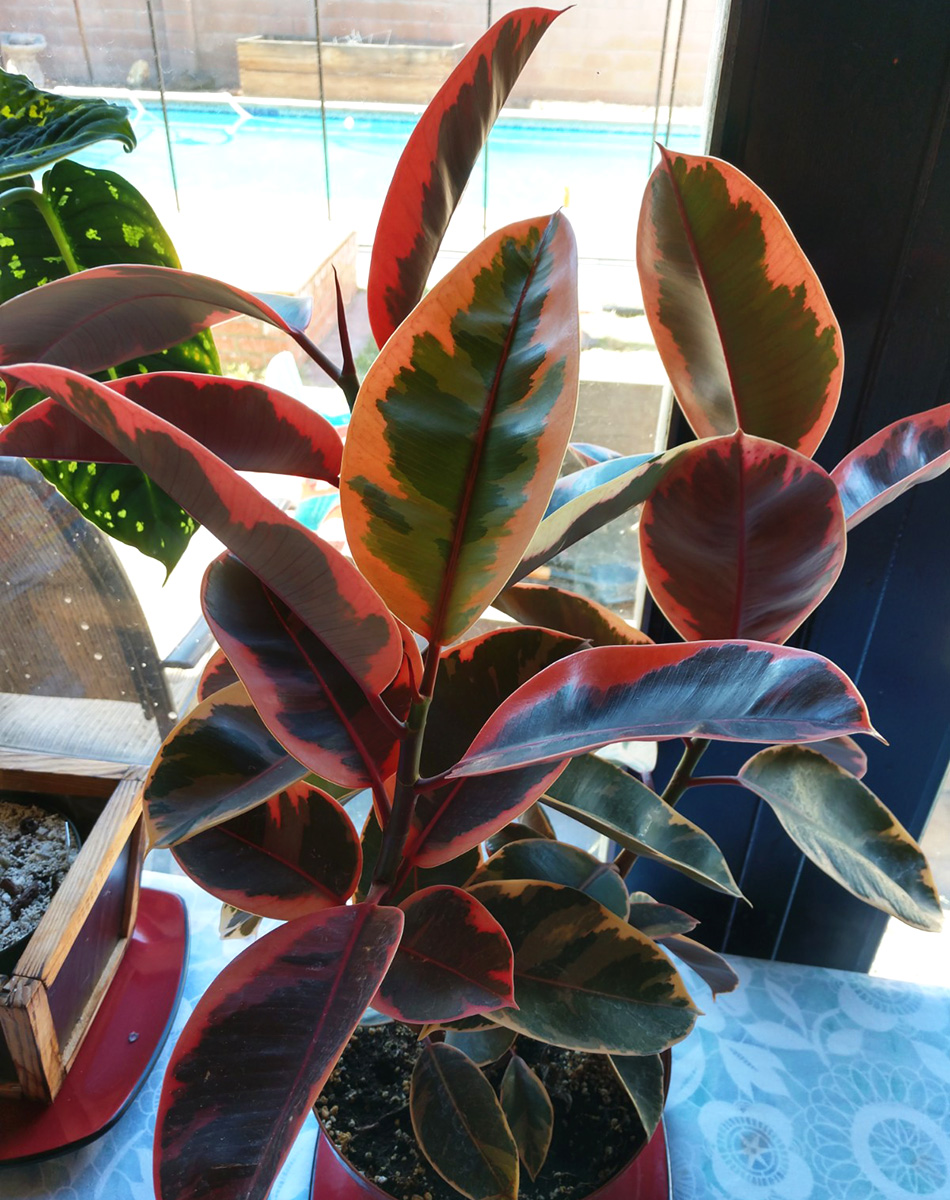
Tending to houseplants can be a rewarding experience for any plant enthusiast. I discovered a love of houseplants while far along in my pregnancy here in Southern California. It was hot, I was huge, and I had little will to wobble outside and tend to my outdoor plants. The hot summer months can be the perfect time to engage with your indoor plants instead.
Understand the origins and needs of houseplants
Most of the plants sold as houseplants naturally grow in more tropical settings. I’ll never forget a trip to Costa Rica that revealed my indoor plants growing outside and loving it. These climates do not have the extreme highs and lows in temperatures that we experience here in Southern California. Occasionally with the right microclimate, a tropical houseplant can grow outdoors here perennially, but often our nighttime temperatures are too cold for them. The safest place in our climate for these plants is a greenhouse or the inside of a home where the temperature is more controlled.
Many houseplants also tolerate tight potting conditions. Several indoor plants are epiphytic in the wild, meaning they grow without soil and will climb upon other plants for support. There is so much humidity in these climates that they can get moisture through the arial roots they grow. An example of this kind of growth is that of philodendrons (Philodendron spp. and cvs., Zones 9–11). And yet philodendrons are extremely durable houseplants that can love being root bound. You will notice the large arial roots emerging from these plants as they seek water and support. Sometimes you will find your indoor plants growing in lava rock or bark. These act as stabilizing mediums rather than to support nutritional needs.
There are many possibilities when choosing plants to grow inside your home. But generally speaking, you want bright, indirect light, and most plants do well with once-a-week watering. This is how I’ve successfully grown most of my houseplants. My favorite indoor plants have a Seussian character, so I look for standouts that will add some fun to my home. Here are a few of them.

‘Tricolor’ dracaena
Dracaena marginata ‘Tricolor’, Zones 10–12
‘Tricolor’ dracaena, also called ‘Tricolor’ Madagascar dragon tree, is a plant that will add character to any space. It loves bright light and has low water requirements (although it’s tolerant of occasional overwatering). But be wary of rotting the roots by planting it in too large of a container. It’s typically planted in lava rock and has a very shallow root system.

String of hearts
Ceropegia woodii, Zones 10b–12
Also called rosary vine, this hanging plant will delight with its delicate heart-shaped, succulent leaves. It takes bright, indirect light. I have mine placed directly in an east-facing window, and it is quite pleased. String of hearts can grow about 3 feet long. You can cut it back hard and it will reemerge from its caudex.

Blue star fern
Phlebodium aureum, Zones 9–12
This epiphytic blue fern is native to South America and makes a durable houseplant. It looks best when provided with lots of water in a fast-draining soil mix with lava rock or perlite. However, it can recover easily from periods of drought if you forget to water it. Because it’s epiphytic, it loves the humidity, so a bright bathroom would be a perfect spot for it. That said, I have grown this plant in dry, hot conditions with success too, so it’s very versatile.

Xerographica air plant
Tillandsia xerographica, Zones 9–11
This air plant is one of the most durable ones out there. Native to the subtropical forests of Mexico, it lives high up in tree canopies. This makes it more tolerant of drier conditions than many other air plants. Provide bright light, and mist it a couple of times weekly. You can also fully submerge it for a few minutes about once a month. After this soaking, make sure no water is pooled in the interior of the leaves, as this can cause rot.

‘Ruby’ rubber tree
Ficus elastica ‘Ruby’, Zones 10–11
This pink, variegated tree displays its best color growing in bright, indirect light and warm temperatures. Plants in the Ficus genus generally do not appreciate drafty, cooler homes. ‘Ruby’ rubber tree likes to dry out between watering. It will want to be repotted every couple of years for fresh soil and nutrients.
Looking for that perfect houseplant? Here are some exceptional Southern California houseplant hotspots to check out!
Local sources for houseplants

Foothill Nursery
10456 Foothill Blvd.
Sylmar, CA 91342
(818) 897-3632
Foothill Nursery has greenhouses located in the San Fernando Valley of Los Angeles that are loaded with a variety of houseplants. They have every typical houseplant you could want but with great quality and reasonable prices.
Rolling Greens Nursery
9528 Jefferson Blvd
Culver City, CA 90232
(310) 559-8656
Rolling Greens is a very lovely garden center with a diverse houseplant collection. I definitely recommend it for all your exterior and interior plant needs! It’s a beautiful nursery to explore.
Mickey Hargitay Plants
1255 N Sycamore Ave
Los Angeles, CA 90038
(323) 467-8044
Mickey Hargitay is a great nursery in Hollywood. Looking for large indoor plant specimens? This is your spot to check those out.
When it comes time to repot your houseplants, check out Repotting Houseplants in Southern California.
—Cara Hanstein is a head gardener at the Huntington Library, Art Museum, and Botanical Gardens in San Marino, California.
Fine Gardening Recommended Products

isYoung Birdlook® Smart Bird Feeder with Camera
Fine Gardening receives a commission for items purchased through links on this site, including Amazon Associates and other affiliate advertising programs.

Spear & Jackson 4930FZ Razorsharp Telescopic Tree Pruner
Fine Gardening receives a commission for items purchased through links on this site, including Amazon Associates and other affiliate advertising programs.

Ho-Mi Digger - Korean Triangle Blade
Fine Gardening receives a commission for items purchased through links on this site, including Amazon Associates and other affiliate advertising programs.



















Comments
Log in or create an account to post a comment.
Sign up Log in